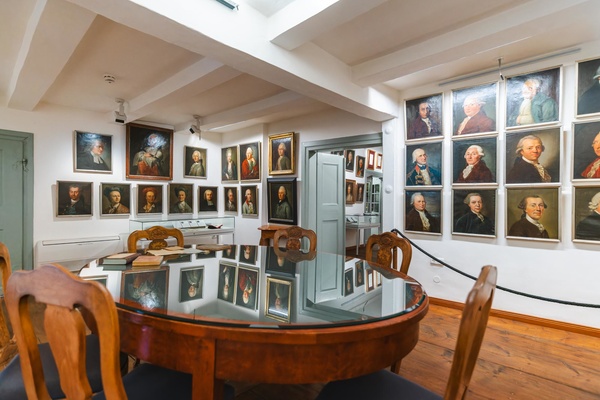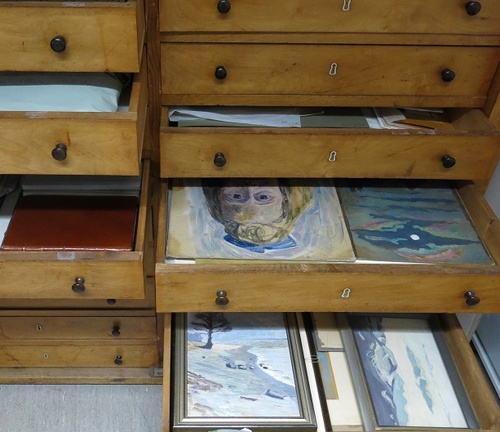
If you want to 'look the 18th century in the face', then take a look at Gleim's "Temple of Friendship". Around 120 portraits of poets, statesmen and scholars cover the walls, including Lessing, Herder, Klopstock, Winckelmann and Anna Louisa Karsch.
After moving from Berlin to Halberstadt in 1747, Gleim began having portraits painted of the friends he had left behind. The creation of the gallery was thus an expression of a new sense of friendship in the 18th century. In later times, the circle of those depicted expanded more and more beyond Gleim's personal friends to include deserving personalities of the time. In line with this new concept, Gleim noted the achievements of each person on the back of many of the portraits.
Portrait culture flourished in the 18th century, yet no contemporary pursued the collection of portraits of friends as persistently as Gleim did. His so-called "Temple of Friendship" is the most extensive portrait gallery of great minds and beautiful souls of the Age of Enlightenment. It is also the only collection preserved in its historical location whose unifying element is friendship. The gallery presents a panorama of the literary world of the Enlightenment in Germany as well as the portrait art of the time. Renowned portrait artists such as Anton Graff and members of the Tischbein family of painters worked for Gleim.
The collection can be researched at museum-digital.

With the exception of the portrait painting collection, the library and the manuscript archive, the majority of Gleim's estate was sold at several auctions, including his collection of prints. Since the opening of the Gleimhaus as a literary museum in 1862, a new collection of drawings and prints has been built up, into which a few sheets from Gleim's estate have found their way. Portraits of poets, artists and scholars were a focal point from the very beginning. At the end of the 19th century, the portrait print collection of Halberstadt’s chief cathedral preacher, Christian Friedrich Bernhard Augustin (1771–1856), was added to the museum. This collection includes portraits of notable figures from Halberstadt, some of which also originated from Gleim’s collection and the estate of Augustin’s father-in-law, Gottlob Nathanael Fischer (1748–1800). Many of the sheets from the Augustin Collection are labelled with biographical information as well as autographs of the depicted personalities. They are still organised according to the traditional principle of class and profession.
The collection of prints includes large groups of works by the Halberstadt-born graphic artist Ludwig Buchhorn (1770-1856) and the portrait artist Georg Friedrich Adolph Schöner (1774-1841), who resided in Halberstadt for many years.
Except for newer pieces and duplicates, the Gleimhaus portrait prints are fully integrated into the "Digital Portrait Index of Printed Portraits of the Early Modern Period".
A broad selection from the graphic collection is available at museum-digital.

In addition to its portrait painting and graphic collections, the Gleimhaus has assembled a collection of other art objects, some of which have originated from, or returned to, Gleim’s estate. Among the collection’s standout pieces are the statue of Anna Louisa Karsch, Gleim’s writing chair, a commemorative ring dedicated to Frederick II, and a pair of commemorative images of Ewald Christian von Kleist by Adam Friedrich Oeser.
The collection can be researched at museum-digital.

In addition to Gleim’s own collections, the Gleimhaus preserves a range of estates or partial estates from various regional artists.
This collection is organised into several sub-collections:
more